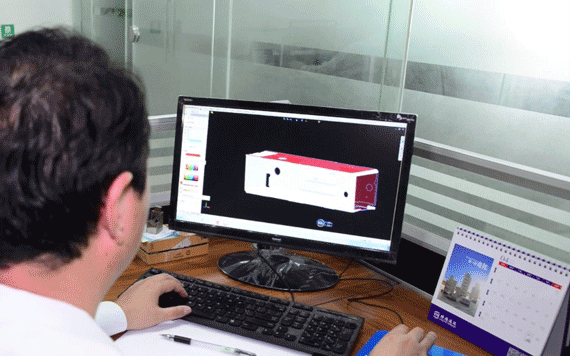How to Design Stamping Die: Methods and Steps
Step1: Stamping Process Analysis of Stamping Parts
Stamping parts must have good stamping technology, in order to be product qualified stamping parts in simplest and most economical way. Stamping technology analysis can be completed by following according to following methods.
1. Review product diagram. Except for shape and dimension of stamping parts, It’s important to know requirements of product precision and surface roughness.
2. Analyze whether the structure and shape of product are suitable for stamping processing.
3. Analyze whether the standard selection and dimension labeling of product are reasonable, and whether dimension, location, shape and precision are suitable for stamping.
4. Is the requirements of blanking surface roughness strict.
5. Is there sufficient demand of production.
If the product’s stamping technicality is poor, the designer should be consulted and put forward the plan of design modification. If the demand is too small, the other production ways should be considered for processing.
Step2: The Design of Stamping Technology and Best Stamping Workstation
1. According to the shape and dimension of stamping parts, determine the stamping process, blanking, bending, drawing, expanding, reaming and so on.
2. Evaluate the deformation degree of each stamping forming method, If the deformation degree exceed the limits, the stamping times of process should be calculated.
3. According to the deformation and quality requirements of each stamping process, arrange reasonable stamping process steps. Pay attention to ensure the formed part (include the punched holes or shape) can’t be formed in the later working steps, because the deformation area of each stamping process is weak. For multi-angle, bend out, then bend in. Arrange the necessary auxiliary process, restricting, leveling, heat treatment and other process.
4. Under the premise of ensure the product precision and according to production demand and blank positioning and discharging requirements, confirm the reasonable process steps.
5. Design more than two technology schemes and choose the best from the quality, cost, productivity, die grinding and maintenance, die shot times, operation safety and other aspects of comparison.
6. Preliminary confirm the stamping equipment.
Step3: Blanking Design and Layout Design of Metal Stamping Part
1. Calculate the blanking parts dimension and drawing blanking according to stamping parts dimension.
2. Design layout and calculate the material utilization according to blanking dimension. Choose the best after designed and compared several layout.
Step4: Stamping Die Design
1. Confirm and die structure of each stamping process and draw mold diagram.
2. As to specified 1-2 procedures of mold, carry out detailed structural design and draw the die working diagram. The design way is as follows:
1) Confirm the mold type: Simple die, progressive die or composite die.
2) Stamping die parts design: calculate the cutting edge dimensions of convex and concave dies and the length of convex and concave dies, confirm the structure form of convex and concave dies and the connection and fixing way.
3) Confirm the location and pitch, then corresponding location and pitch mold parts.
4) Confirm the ways of pressing material , unloading material, lifting parts and pushing parts, then design the corresponding pressing plate, unloading plate, pushing parts block, etc.
5) Metal stamping die frame design: upper and lower die base and guide mode design, also can choose standard die frame.
6) On the basis of the above work, draw the mold working drawing according to the scale. At first, draw blank with double dot. Next, draw location and pitch parts, and connect them with connecting parts. At last, draw pressing and unloading material parts on suitable position. The above steps can be adjusted according to the mold structure.
7) There must be mold’s outer contour size, mold’s closing height, matching size and matching type marked on working diagram. There must be requirements of stamping die manufacturing precision and technical marked on working diagram. The working diagram should be drawn as National Cartographic Standards with title bar and name list. For blanking die, there must be layout on the upper left corner of the working drawing.
8) Confirm center of die pressure center and check whether center of pressure and the center line of the die handle coincide. If they don’t, modify the die result accordingly.
9) Confirm the punching pressure and choose the stamping equipment. Check the the mold size and parameters of stamping equipment(shut height, working table, die handle mounting size, etc).

